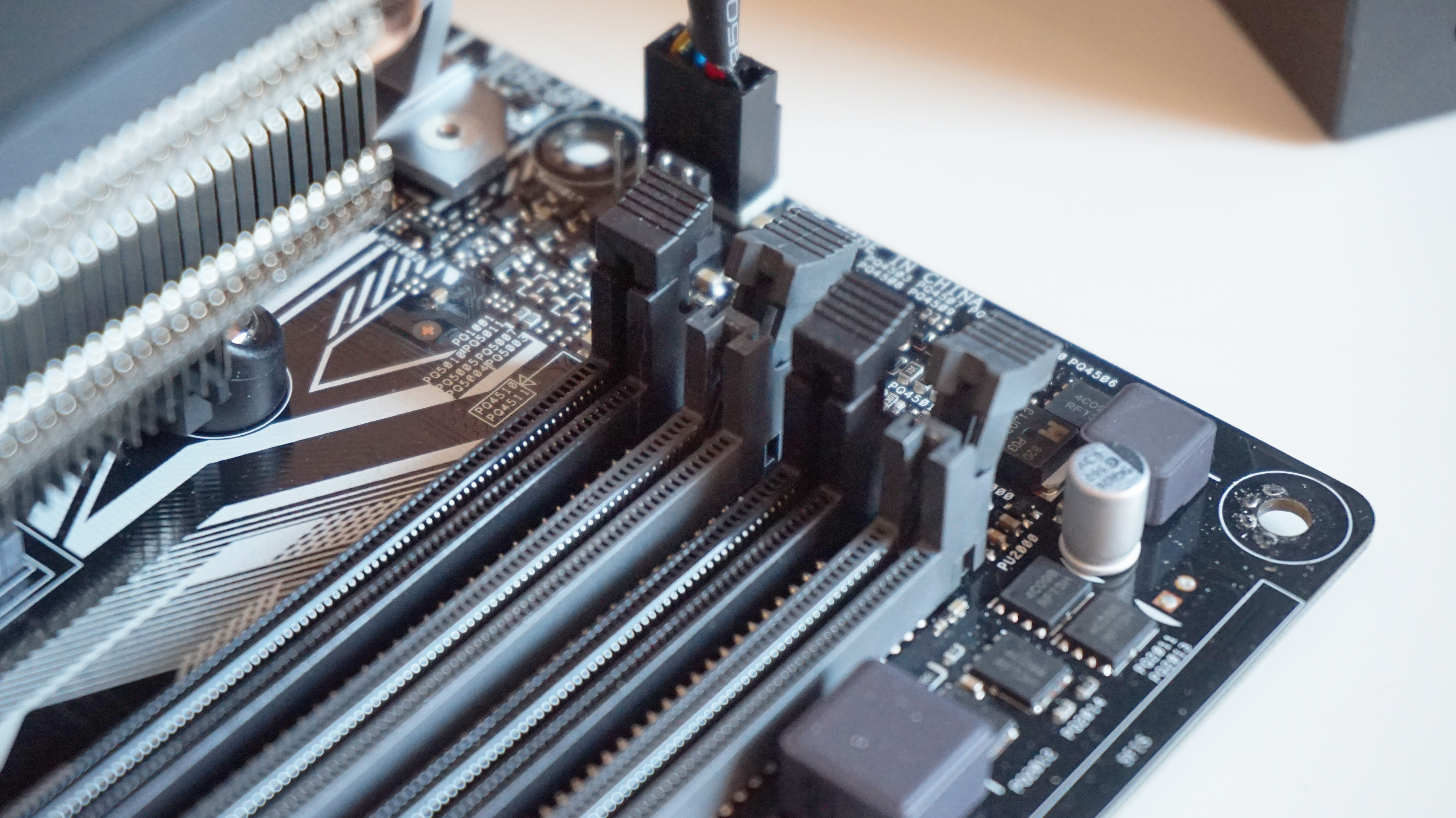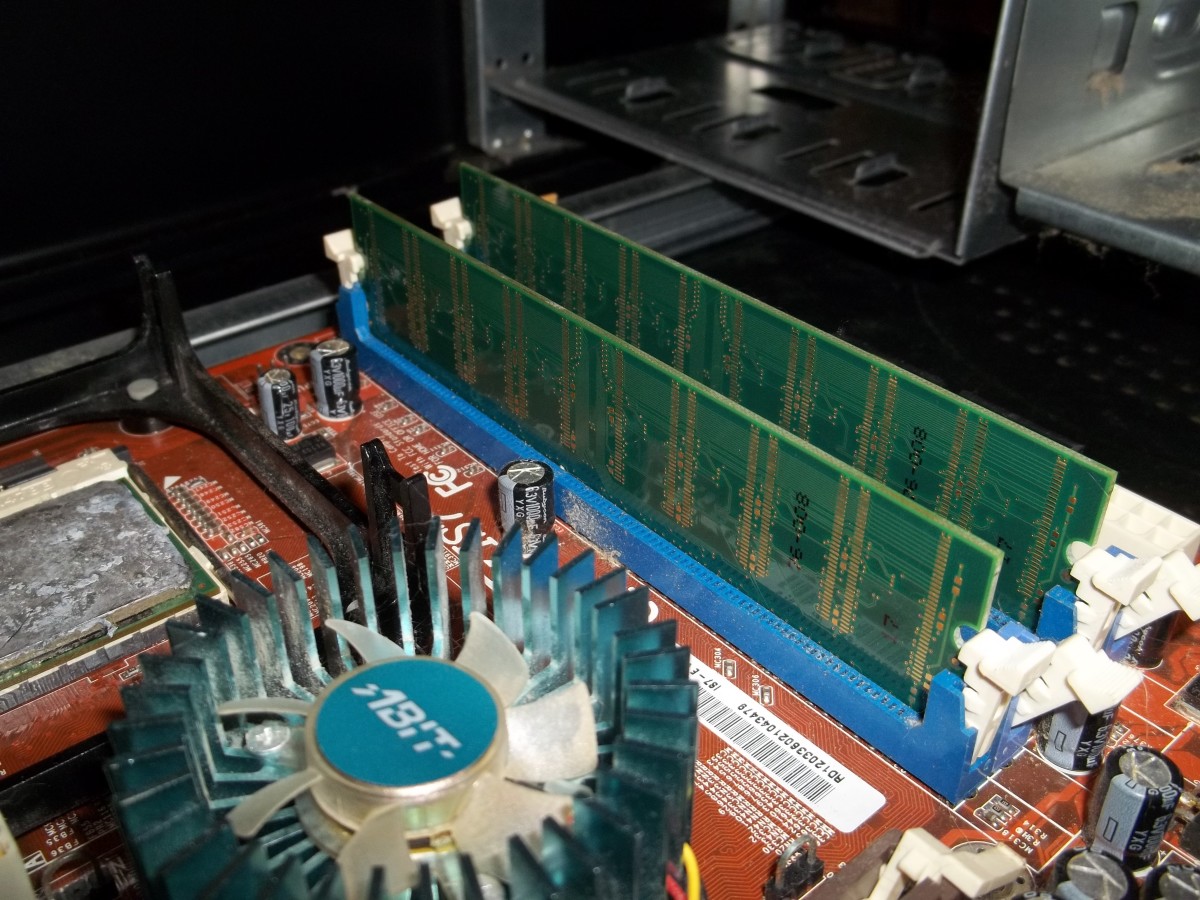What Slot Does Ram Go In

OK, ill just summarize from all the answer above, and correct view things. Which slot the go in definitely important if you talk about installing RAM on motherboard that accept 2 kinds of RAM, (yes there are several motherboard that designed to accept 2 kinds of RAM). On that motherboard you must install it on the right slot, or it will not works.

I've got an Asus P5B Deluxe motherboard. Today I tried adding some new RAM to take it from 4GB to 8GB. The board is about 6 years' old. I've never used the black RAM slots before, only the yellow ones (2x2GB in slots 1 and 3).
My system only sees 6GB, not 8GB. I've tried various combinations of the RAM, get the same result.
To check the new RAM wasn't defective, I tried it in slot 1, a known good slot. All 4 sticks of RAM worked in slot 1, so the RAM wasn't faulty.
All 4 sticks work in every slot except slot 2 (the first black RAM slot). If I put any stick in slot 2 - old or new - the PC is dead, it won't even boot to the BIOS.
So it looks like I have a defective RAM slot.
Does anyone know of any way to fix this? The board is too old to RMA. I've tried an emery board down the defective slot, and I've tried squirting WD40 down it. No improvement.
Does anyone have any other ideas on how to get that bad slot working?
Thanks!
If you’ve ever taken a look at a product page for sticks of RAM, or at the specifications for a CPU or motherboard, you’ve probably seen “memory channels” mentioned.
- The original RAM stick is in slot #2, 'position 4'. My question is, should my new stick (the second stick) go into slot #4 or #1 (as numbered, not as positioned) so as to have dual channel functionality (which I've heard is some 10% faster than single channel)?
- And just lastly here’s a look at how the DDR4-3000 CL16 memory compares to DDR4-3200 CL14 memory. Please note the CL14 memory does pack a 32GB capacity as you can’t get 3200 CL14 4GB modules.
- The RAM fits into long channels on the motherboard in sets of two, three or four. If you have a quad channel motherboard, that is a motherboard capable of supporting four memory cards, make sure you install the RAM in corresponding pairs. The RAM slots will be color coded to indicate which RAM pairs go together.
- What Slot Does Ram Go In, skyline casino barber shop, casino online gaming software, international conference on gambling & risk taking.
For many beginners, this sparks questions like, “What’s the deal? Does dual-channel mean I can only use two sticks? What do multiple channels do that one channel doesn’t? Can I use quad-channel RAM on a dual-channel motherboard?”
What Slot Does Ram Go Into
The answers to those questions and more can be found below, so read on!
RAM Channels: The What
Simply put, memory channels are the links between your RAM and your CPU through which data moves between the two. The RAM is the computer’s short-term memory, and the CPU is the main processor that does stuff with the information in the memory; the RAM channels are how that information moves back and forth.
To be clear, these memory channels are actual wires that exist on/in the motherboard. Though RAM kits may call their arrangements “channels,” the actual number of channels and the number of RAM sticks are independent of each other; any mention of channel count on a RAM kit’s product/specification page is just an informal, technically-incorrect way of referring to how many sticks of RAM there are in the kit. In addition, the number of RAM slots on a motherboard is independent of the number of memory channels. A channel needs only one stick to be used, and any more than that doesn’t necessarily stop things from working.
What Slot Does The Ram Go In
Most modern motherboards have two to four memory channels. On the AMD side, every AM4 socket motherboard has two memory channels, and every TR4 socket motherboard has four channels. On Intel’s side, every LGA 1151 motherboard has two memory channels, and every LGA 2066 motherboard has four memory channels. This means that, on our main chart, every configuration up to and including the “Enthusiast” tier has two memory channels. The “Extremist” and “Monstrous” tiers are the only rows which have four memory channels.
In addition, CPUs also support a certain maximum amount of memory channels. You don’t really need to worry about this, as every CPU will handle the amount of memory channels available on their supporting motherboards. There are only two notable exceptions: Intel’s i5-7640X and i7-7740X, which are both LGA 2066 CPUs, and very odd purchases anyway.
RAM Channels: The How
To explain what multiple channels do, let’s try an analogy.

Imagine a manufacturer of products:
Let’s say this manufacturer (your CPU), with potentially many factories (cores) in need of materials, makes orders for materials from only one supplier (memory channel). Even if the supplier has a whole lot of materials (capacity / stored data), and may run multiple warehouses (RAM sticks) of their own, it has a limited capacity for making shipments, and so can’t handle multiple shipments to the manufacturer at once. There may be multiple shipments ready to go, but they can’t actually start shipping until the current shipment is done.
A single-channel supplier warehouse attempting to serve a quad-factory manufacturer with one truck

The problem is, this manufacturer can often use materials faster than their supplier can ship them, and the delay from waiting on the supplier’s logistics system for consecutive orders can slow things down. Especially when this manufacturer’s factories are being heavily loaded with orders of their own from vendors and customers (your other components) while relying on materials orders, the supplier can pose a problem.
So, the manufacturer contracts with a second supplier in addition to the first. Now, the manufacturer does something efficient: They alternate orders between the two suppliers. This way, the manufacturer can have two simultaneous shipments coming their way, and they suddenly find that waiting on consecutive orders to be shipped is now significantly less of an issue, since their effective capacity for getting shipments has been doubled. This same idea can extend even further across more suppliers.
Really, how much the number of suppliers the manufacturer uses actually matters all depends on: how quickly materials are being used, how many factories they have (since each might come in need of materials at any given moment), how busy the manufacturer or specific factories are, and how quickly the suppliers themselves can send shipments to the manufacturer. Most of the time, this isn’t a big deal, but when things line up well or poorly, the number of suppliers (i.e. memory channels) can make a notable difference.
DDR5: Breaking the Status Quo?
If you’ve been keeping up-to-date on DDR5 memory, you may have seen mention of DDR5 RAM sticks (yes, each stick itself) having two memory channels. And what they’re saying is true, from a certain point-of-view. From my understanding, these “channels” aren’t like the memory channels described above, but still apply a similar (though not quite the same) concept on the stick-by-stick level.
Micron, one of the only three manufacturers of memory chips, describes this development as “essentially turning an 8-channel system as we know it today into a 16-channel system.” So what is going on here?
From what I can tell, it seems that each stick can work with two separate bunches of data, though it can’t be moving data from both bunches across the actual (physical, on-the-motherboard) channels at the same time. For example, a stick could be receiving data on one half, and be preparing to send data on the other half in the meantime. This is still a significant improvement in design over previous iterations of RAM like DDR4, though not quite as dramatic as it sounds at first. Reality is often disappointing; we’ll just have to wait and see if this turns out to actually be the case.
Conclusion
Let’s make one thing clear: to use multiple channels, you need multiple RAM sticks. Those RAM sticks should be installed so that you have at least one stick in each channel. The best thing you can do here is place your RAM sticks according to what your motherboard manual says. Though the slots are usually color-coded, this isn’t always the case, so check that motherboard manual.
What Slot Does Ram Go Into
For many country versions of our main chart, the linked 8GB options (and every 4GB option) are single sticks; so, without another stick of RAM, only one memory channel will be used. This is not the case everywhere, though, and all 8GB kits in the US version of the chart have two sticks for dual-channel. The 16GB options are dominated by two-stick 16GB kits, though some countries still have one-stick options linked. However, it’s up to you to choose how many sticks will work best for your system and your program tasks—there’s no need to get the exact kits we link.